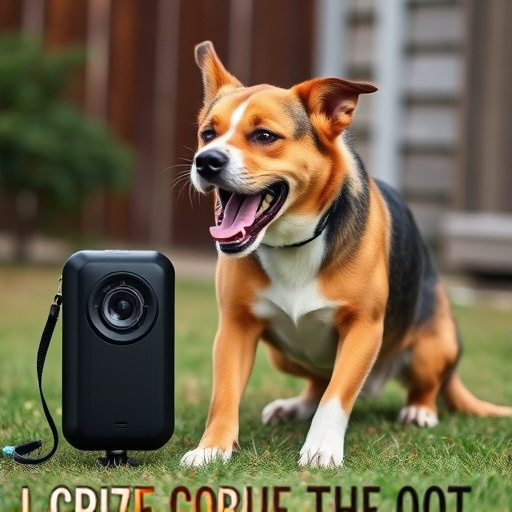Electronic pet deterrents for excessive canine barking employ safe methods like high-frequency sounds or sprays, guided by stringent safety regulations that limit intensity to avoid harm. These devices empower responsible pet owners to control stimulation levels based on their dog's unique attributes while adhering to international standards and local guidelines. Selecting a bark control device requires understanding your pet's behavior and environment, focusing on adjustable sensitivity, durability, weather resistance, and compliance with Electronic Pet Deterrent Safety Regulations for effective and humane training.
“Discover the power of multiple range bark control devices, a revolutionary solution for managing canine behavior. This comprehensive guide explores the world of electronic pet deterrents, shedding light on their functionality and effectiveness. From understanding the science behind these devices to navigating safety regulations, we delve into the benefits and considerations of using advanced bark control systems. Learn how to choose the ideal device, ensuring both pet safety and desired behavioral outcomes.”
- Understanding Electronic Pet Deterrents: How They Work
- Benefits and Considerations for Using Multiple Range Devices
- Safety Regulations and Standards for Bark Control Devices
- Choosing the Right Bark Control Device: Key Features and Tips
Understanding Electronic Pet Deterrents: How They Work
Electronic pet deterrents, also known as bark control devices, are designed to correct unwanted canine behavior through safe and effective methods. These devices operate by emitting a high-frequency sound or spray when a dog barks excessively. The principle behind this is not to harm the animal but rather to startle it, distracting from the behavior that’s causing concern. Modern electronic pet deterrents come in various forms, including collar-mounted devices and remote controls, operating on different frequency ranges to cater to specific needs and ensure precision.
Safety regulations play a pivotal role in the development and use of these deterrents. Many countries have guidelines governing their production and sale to guarantee they don’t cause physical harm or distress to pets. For instance, regulations dictate the intensity of sound and spray, ensuring they’re within safe limits. Additionally, these devices are designed to be sensitive, activating only when a dog barks loudly, minimizing false triggers. This ensures that pet owners can use them responsibly while training their dogs, knowing the safety of their beloved companions is paramount.
Benefits and Considerations for Using Multiple Range Devices
Using electronic pet deterrents with multiple ranges offers several advantages for responsible pet ownership. These devices, designed to correct unwanted behaviors like barking, allow for precise training and control by providing a safe and effective alternative to traditional punishment methods. With adjustable settings, pet owners can choose the appropriate level of stimulation based on their dog’s size, temperament, and sensitivity, ensuring minimal discomfort while maximizing effectiveness.
When considering multiple-range devices, it’s crucial to stay informed about local Electronic Pet Deterrent Safety Regulations. While these regulations vary by region, many aim to protect both pets and humans from potential harm. Users must carefully read and follow instructions, select devices approved for their areas, and ensure proper use to maintain safety and comply with legal standards.
Safety Regulations and Standards for Bark Control Devices
Bark control devices, especially those with multiple ranges, must adhere to stringent safety regulations and standards to ensure their effectiveness while minimizing potential harm to both pets and humans. Electronic pet deterrents, for instance, should be designed with safety as a paramount concern. These devices use various stimuli like sound, vibration, or spray to discourage excessive barking without causing physical pain or distress. Manufacturers must comply with international standards such as EN 62471 for electrical safety and ISO 13432 for mechanical safety to guarantee their products’ integrity.
Moreover, the US and European Union have specific guidelines for electronic pet deterrents, focusing on limits for sound pressure levels (to prevent hearing damage) and energy output (to avoid shocks or burns). Compliance with these regulations is crucial to ensure consumer safety and product liability. Regular testing and certification by independent bodies further validate the safety of bark control devices, giving pet owners confidence in their effectiveness while promoting responsible use.
Choosing the Right Bark Control Device: Key Features and Tips
When selecting a bark control device, understanding your pet’s behavior and environment is crucial. Look for features like adjustable sensitivity levels and multiple range options to cater to specific needs. A device with a long-range setting can be effective outdoors to deter excessive barking caused by neighborhood dogs or environmental stimuli, while shorter ranges are suitable for controlled indoor spaces to address persistent barking during certain activities.
Key considerations include durability and weather resistance, especially if placing it outside. Ensure compliance with local Electronic Pet Deterrent Safety Regulations to guarantee a humane and safe solution. Additionally, consider the device’s training capabilities; some models offer progressive training programs to teach your pet alternative behaviors, promoting positive reinforcement alongside deterrent measures.
Electronic pet deterrents, particularly those with multiple ranges, offer a humane and effective solution for managing excessive barking. By understanding how these devices work and considering safety regulations like those set by leading organizations, pet owners can choose the right product to ensure their pets’ well-being while maintaining neighborhood harmony. When selecting a bark control device, look for key features that match your needs and always prioritize safety—both for your pet and others in the vicinity.
